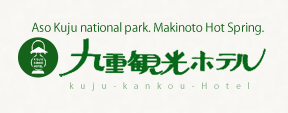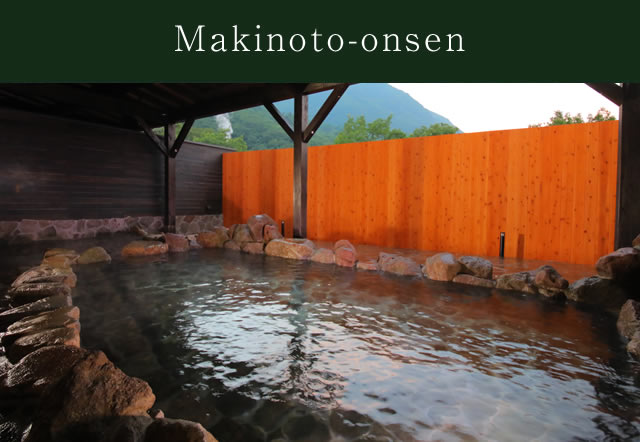The water source gushing from inside the grounds
The water source gushing from inside the grounds “Makinoto Hot Spring,”
was named after Maki Yuko, a Japanese climber who lead an
expedition to Mt. Manaslu. The smell of sulfur floats in the air,
and hot spring minerals float in the translucent hot
water in this hot spring overflowing with rural beauty

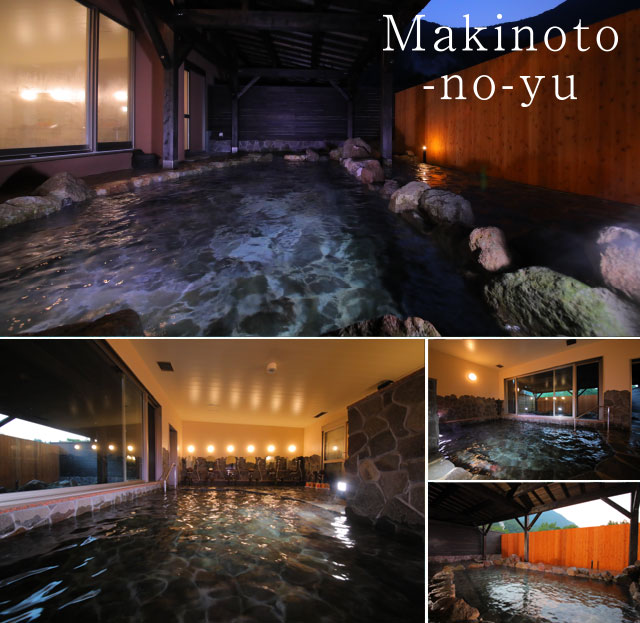
Scent of sulfur with source draw hanging outdoor bath
"Makinoto-no-yu".
There is also a public bath.
Please enjoy plenty of hot water.
《 Guidance available 》
| location |
-Sensui- First floor (Makunoto-no-yu)
The bath is divided into areas for men and women |
| Area |
Bath : indoor bath 20〜30 people,
open pit 15〜20 people
Washing place :10 shower |
| Usable times |
From check-in to check-out |
《 Use of the bathing only 》
| Usage fee |
Adults ¥500
Children (4 〜 12 years old ) ¥400 |
| Usable times |
12:00〜20:00 |
・ The usable times may change depending on the circumstance.
・ Mountain climbing groups of over ten persons will be discounted.
Please makes enquiries for details. tel +81-973-79-2211

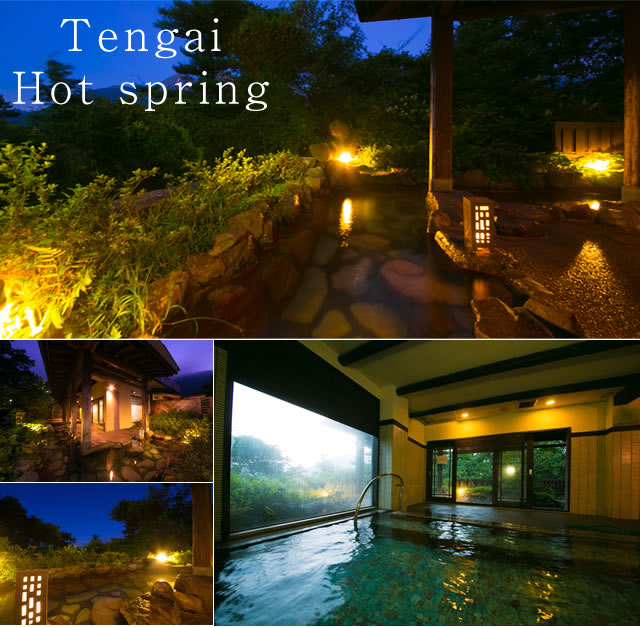
Large public and open air bath for guests.
An indoor hot spring made with Japanese cypress
and a rock made hot spring
《 Usable times 》
| location |
An indoor hot spring made with Japanese cypress and a rock made hot spring |
| Area |
Bathtub : indoor bath 10 people
open pit 5〜6 people
Washing place :3 shower |
| Usable times |
0:00~24:00 |
Natural 100% Tengai hot spring
There are indoor and open air baths for men and women separately, and they are also available at nighttime.
※Guest is a large bath , open-air bath dedicated .


| Source name |
Kuju Kanko Hotel Makinoto Hot Spring |
| Seep areas |
230 Tano, Kokonoe-machi, Kusu-gun, Oita |
| Spring quality |
Simple sulphur springs |
| Spring up Celsius |
64° |
| Characteristics |
No hydrogen or sulfur smell |
| Indication |
Chronic rheumatoid arthritis, Nerve pain, Neuritis, Chronic skin disease |
| Contraindications of bathing |
All kinds of acute disease,Advanced heart disease and progressing diseases. |

The establishment uses master staff qualified by the Japanese center for health development and Oita prefecture to give you a safe and reassured bathing experience.

Chlorine is not used in the spring water on the establishment’s grounds.
legionella pneumophila is tested for regularly and has never been detected.

shampoo/conditioner/body soap・soap/Face lotion/Lotion/Hair dryer
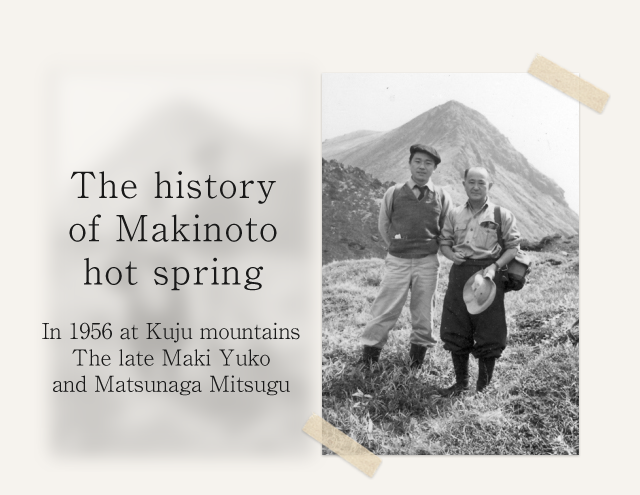
『The origin of the hot spring’s name』
Makinoto Hot Spring comes from Maki Yuko
Makinoto Hot Spring was called “Saruwatari” from long ago.In Meiji 1904 it was opened by Naka Hiroto as Nakano Hot Spring, and became widely known as a curative mud bath.
Then, in Showa 1956, the current Kuju Kanko Hotel founder, Mitsugu Matsunaga, took over the rights to the old hot spring and restarted it as Makinoto mountain lodge.
Since even before the highway to the lodge was built, it has been very crowded with mountain climbers from the climbing boom of that time aiming for the Kuju mountains.
A mountain climber from that boom, Maki Yuko (Showa 1958), visited the hot springs on his way to Kuju mountains and was very fond of them, and since then it has become famous, giving it the name Makinoto after him.
Even after that time, Maki visited the hot spring on countless occasions while visiting the rhododendrons in bloom.
(1894 to 1989) Maki Yuko: mountain climber, important cultural contributor, and third Japanese to lead a climbing expedition to Mt. Manaslu.
